A vibrant hub of the arts. An architectural marvel. A premier destination for dining and shopping. A true trendsetter. New York City wears many crowns, offering an irresistible feast for everyone.
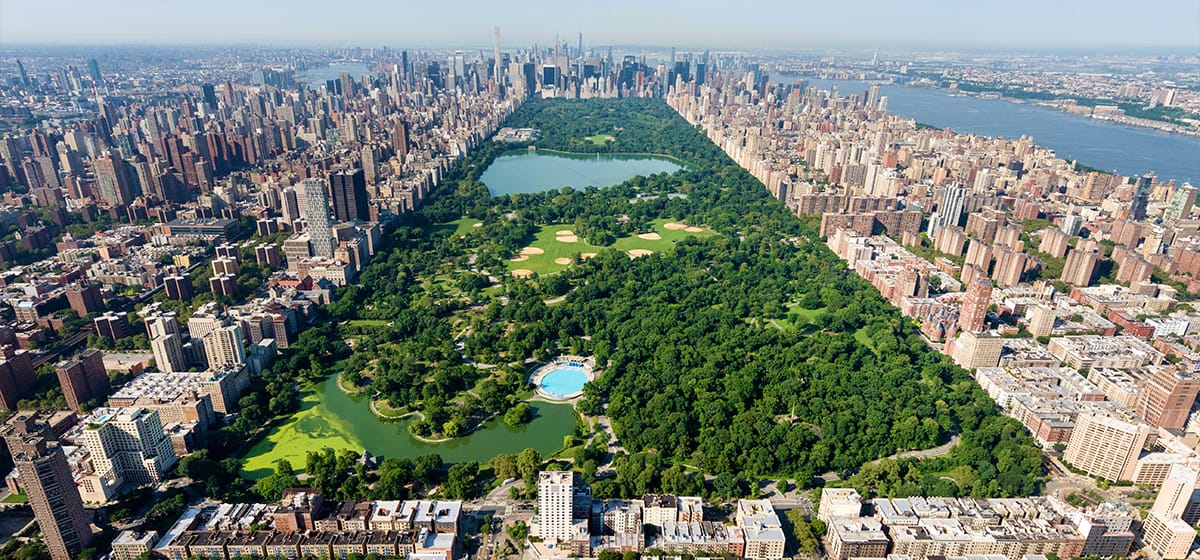
Central Park is one of the world’s most famous green spaces, sprawling across 843 acres of rolling meadows, rocky outcrops, elm-lined paths, manicured European-style gardens, a lake, and a reservoir. The park also features an outdoor theater, a memorial to John Lennon, a charming waterside café, and the beloved Alice in Wonderland statue.
Some must-see spots include the 15-acre Sheep Meadow, where thousands relax and play on warm days; the Central Park Zoo; and the forest-like Ramble, a favorite for birdwatchers. During warmer months, free concerts take place on the Great Lawn, and the annual Shakespeare in the Park productions at the open-air Delacorte Theater offer world-class drama. Don’t miss the Shakespeare Garden between 79th and 80th Streets, which boasts lush plants and a stunning skyline view.
History of Central Park
Like New York’s subway system, Central Park was designed as a great equalizer—intended as a recreational space for all residents, regardless of race, class, or creed. Created in the 1860s and 1870s by Frederick Law Olmsted and Calvert Vaux, it was built on the city’s marshy northern edge. Though it’s only the fifth largest park in New York City, its 800-plus acres stand out amid Manhattan’s dense, upscale neighborhoods.
Ironically, the land was taken from communities such as Seneca Village, home to immigrants and free Black residents—the very groups Central Park was meant to serve. Olmsted and Vaux were tasked with transforming a swampy, cluttered area into a pastoral escape where the wealthy could promenade and later, where people from all walks of life could gather away from pubs and graveyards.
Inspired by England’s Birkenhead Park—the first publicly funded park—Olmsted aimed to create a natural-looking American landscape out of urban detritus. The project took years, vast sums of money, and thousands of workers, enduring slow progress during the Civil War. The finished park offered a lush retreat from city life with separated footpaths and roads, thanks to clever engineering.
Legacy
Olmsted’s success with Central Park launched his career and influenced landscape architecture nationwide, from Buffalo to San Francisco. The park has starred not only as a cinematic backdrop in films like When Harry Met Sally and The Muppets Take Manhattan but also as a landmark shaping the surrounding cityscape. Iconic buildings such as the Dakota and the towering Central Park Tower line its edges, creating a skyline as famous as the Empire State Building or the Brooklyn Bridge.
Things to Do
Central Park remains a beloved destination year-round. Warm weekends bring crowds of joggers, skaters, musicians, and tourists, while quieter weekday afternoons offer peaceful retreats in areas like Harlem Meer and the North Meadow. Summer visitors can enjoy fishing, camping, or stroll across the picturesque Bow Bridge connecting Cherry Hill and the Ramble. Nearby, the Bethesda Fountain and Loeb Boathouse—where you can rent rowboats or dine—are popular stops.
For dining, Tavern on the Green is a New York classic. Originally a sheep paddock designed by Vaux in 1870, it became a renowned restaurant in 1934. Though it closed briefly, it has been open since 2014 and remains a staple of the city’s food scene.
Winter doesn’t slow the park’s appeal—snow inspires skiing, sledding, and peaceful walks, while New Year’s Eve runners gather for a midnight race. Ice skating is available at Wollman Rink in the southeast and Lasker Rink in the north.
The Central Park Conservancy offers a variety of guided tours focusing on art, wildlife, and family-friendly spots—most are free or $15. Runners can also take advantage of numerous scenic routes through the park.
Getting There & Accessibility
Central Park is well-served by subway lines N, R, Q (to 57th St & 7th Ave), 1, 2, 3, A, B, C, D (to Columbus Circle at 59th St and stops at 72nd, 96th, and 110th Streets), and B, C lines along the west side. Bus routes such as the M10, M20, and Q32 also provide convenient access.
Free and metered street parking surrounds the park, with multiple paid lots and garages nearby. Be sure to check signage carefully to avoid parking fines.
Though the park’s natural terrain predates modern accessibility laws, the Central Park Conservancy provides an accessibility map highlighting slopes, stairs, restrooms, trails, and subway stations suitable for wheelchairs or other mobility aids. The Robert Bendheim Playground, redesigned in 1996, features ramps, an accessible water play area, an elevated sandbox, and play structures with auditory features for Deaf or hard-of-hearing children.
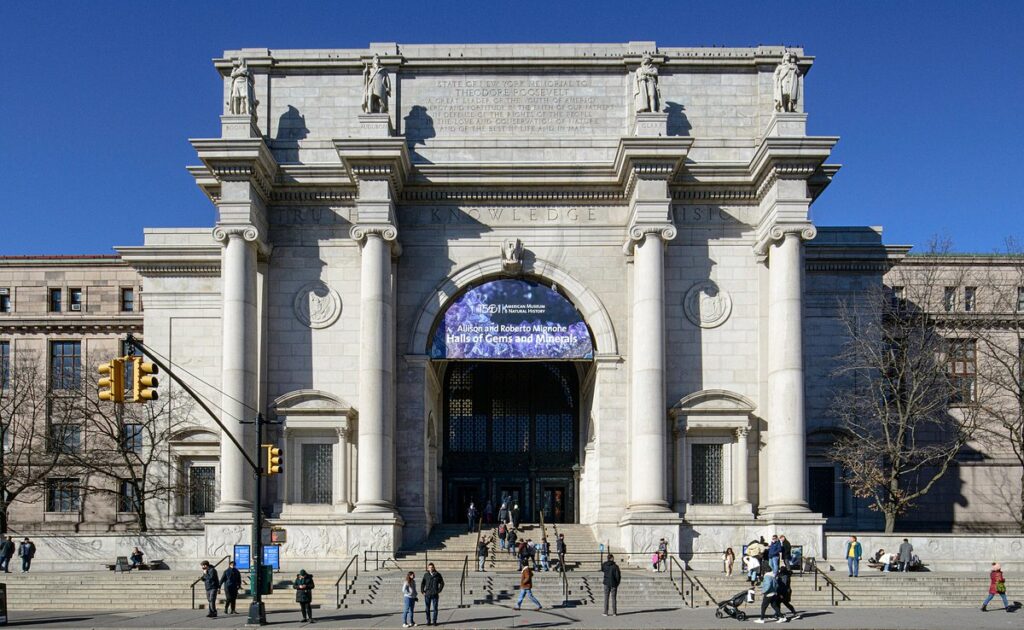
Founded in 1869, this storied museum is home to an astonishing collection of more than 34 million objects, specimens, and artifacts — including towering dinosaur skeletons, extensive stuffed wildlife displays, and a dazzling array of gems and minerals. A New York City icon, it ranks among the world’s premier natural history museums and offers a humbling encounter with giants like the T. rex and blue whale, putting the scale of humanity into perspective.
When visiting New York with children, don’t miss the Rose Center for Earth & Space, featuring a state-of-the-art planetarium, and the Butterfly Conservatory — open from October through May — where over 500 live butterflies flutter freely, often landing on visitors’ arms. For young fans, the museum also served as a filming location for the Night at the Museum movies, adding extra magic to the experience.
Exploring the Museum
The Fossil Halls are a highlight, showcasing nearly 600 specimens including massive Apatosaurus, Titanosaurus, and a fearsome T. rex caught mid-hunt, its knife-like teeth sure to thrill and terrify. Triceratops and Stegosaurus skeletons also make an appearance, along with a complete mammoth skeleton from a later era.
Animal enthusiasts will enjoy the abundant stuffed wildlife exhibits, featuring North American species such as Alaskan brown bears and giant moose. The Milstein Hall of Ocean Life includes impressive dioramas of marine ecosystems, conservation themes, and a famous 94-foot blue whale replica suspended from the ceiling — which actually predates its counterpart in London’s Natural History Museum.
The Mignone Halls, accessible through guided tours, display spectacular gems and minerals — from glittering geodes and crystals to enormous gold nuggets. Visitors inspired by the collection can purchase mineral souvenirs in the gift shop.
At the 77th Street Grand Gallery, a 63-foot canoe carved in the 1870s illustrates the artistry of Native American peoples of the Northwest Coast, alongside anthropological exhibits featuring cultures worldwide. Formerly, a statue of Theodore Roosevelt flanked by African American and Indigenous attendants stood at the museum entrance, but it was removed in 2021 due to concerns over its racial implications.
The Rose Center for Earth & Space is a must-see for astronomy buffs. The planetarium offers hourly immersive shows exploring the universe’s mysteries, and the building houses the impressive Willamette Meteor — a 15.5-ton metallic iron mass that fell in Oregon some 30,000 to 40,000 years ago.
History
The museum’s founding in 1869 was supported by notable figures including Theodore Roosevelt Sr., father of the 26th U.S. president. Initially housed in the former New York Arsenal in Central Park, it moved to its current Victorian Gothic home in 1874. Over the years, expansions reshaped the complex, including the iconic 1936 Beaux-Arts entrance designed by John Russell Pope, famous for the Jefferson Memorial.
In 2019, construction began on a $383 million expansion focused on education — the Richard Gilder Center for Science, Education and Innovation — slated for completion by 2022.
Tickets & Tips
General admission grants access to the permanent exhibits but excludes special exhibitions. Online booking is recommended. Residents of New York, New Jersey, and Connecticut can pay what they wish for general admission. Additional fees apply for space shows, IMAX films, or ticketed exhibitions, but these are modest. To avoid crowds, arrive early when the museum opens, as school groups frequent the galleries during weekdays and weekends tend to be busiest.
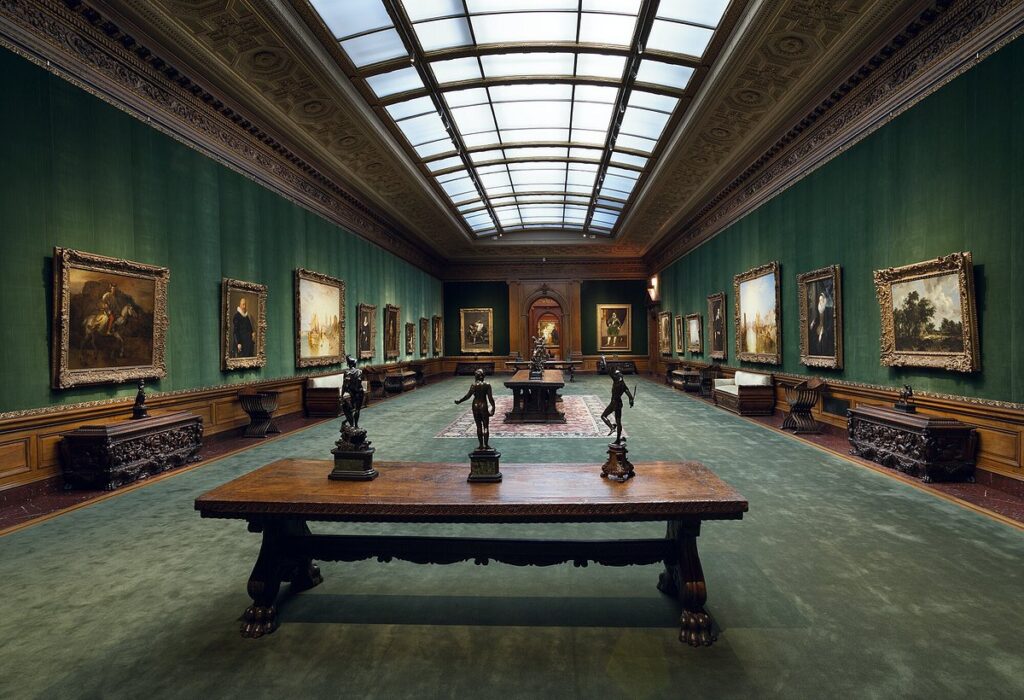
Editor’s note: The Frick is currently closed for renovations and is expected to reopen in early 2025.
Housed in a grand mansion once owned by steel magnate Henry Clay Frick, this exceptional art collection is located on a stretch of Fifth Avenue formerly known as ‘Millionaires’ Row.’ The museum’s more than a dozen elegant rooms showcase masterpieces by artists such as Titian, Vermeer, Gilbert Stuart, El Greco, Joshua Reynolds, Van Dyck, and Rembrandt. In addition to paintings, visitors can admire sculpture, ceramics, antique furniture, and clocks. Classical music enthusiasts will appreciate the piano and violin concerts held on select Sunday evenings.
The Frick offers a unique experience for several reasons. Its beautiful Beaux-Arts building, designed by Carrère and Hastings and constructed between 1913 and 1914, provides an intimate setting often free from large crowds, except during major exhibitions. Inside, a peaceful indoor courtyard fountain and gardens create a serene atmosphere, though the gardens are not open to the public. The Portico Gallery features decorative art and sculpture. Note that children under 10 are not permitted.
Admission includes a highly recommended audio tour available in multiple languages. Upon reopening, the museum will feature expanded galleries on the second floor, private state-of-the-art conservation labs, a café, a new auditorium, an Education Center, and full ADA accessibility. For updates on the renovation progress, visit www.frickfuture.org.

Editor’s note: The New Museum of Contemporary Art is currently closed for renovations and is expected to reopen in early 2025. For the latest updates, visit www.newmuseum.org.
Rising seven stories high, the New Museum’s striking design features a stack of off-kilter white boxes crafted by Tokyo-based architects Kazuyo Sejima and Ryue Nishizawa of SANAA, along with New York’s Gensler. When it opened in 2007, this bold architectural statement brought new energy to the gritty Bowery neighborhood, which has since seen a wave of sleek developments transforming the area.
Founded in 1977 by Whitney curator Marcia Tucker, the museum has moved through five locations over its history. Its mission is straightforward: “New art, new ideas.” Staying true to that vision, the New Museum gave early exhibition space to now-famous artists like Keith Haring, Jeff Koons, Joan Jonas, Mary Kelly, and Andres Serrano. It remains Manhattan’s only museum exclusively devoted to contemporary art. Since exhibitions rotate regularly, it’s best to check the website before planning your visit.
On the first Saturday of every month, the museum hosts special events designed for young artists, featuring interactive crafts and activities for children ages four to 15. Admission is free for kids and includes two accompanying adults.

Off-limits to the public for two centuries, Governors Island has transformed into one of New York City’s favorite seasonal escapes. Just a seven-minute ferry ride from Manhattan, this fort-studded island offers scenic cycling and walking trails, playgrounds, and picnic spots with stunning views of the city skyline. Amid the hum of helicopters and distant traffic, it provides a refreshing break with plenty of history to explore.
Every summer, ferries run regularly from Manhattan and Brooklyn to this 172-acre oasis. While the island is easy to explore on foot, cycling is a popular option—bikes can be rented from Blazing Saddles (www.blazingsaddles.com) for $25 per day, or you can use one of the three Citibike stations on the island.
The northern section features historic landmarks such as Fort Jay, a star-shaped fort built in 1794 and rebuilt 15 years later to defend Manhattan from British attack; Colonels Row, a charming row of eight 19th-century brick officers’ houses; and Castle Williams, a red sandstone fort with eight-foot-thick walls that later served as a military prison. Visitors can freely wander the exteriors and courtyards, but for deeper insight, National Park Service rangers offer guided tours of the historic district (check www.nps.gov/gois for schedules).
Food trucks line Liggett Terrace, offering tacos, ice pops, and craft beers from Brooklyn favorite Threes Brewing—especially bustling on weekends. Nearby Hammock Grove, a 10-acre green space, features 50 hammocks, lawns, and children’s play areas perfect for relaxing.
In the southwest, The Hills boast flower-lined walking paths that rise up to panoramic views of Manhattan from 70 feet above. Below lies Picnic Point, with grassy spots and lounge chairs. The Great Promenade encircles the island with a 2.2-mile trail showcasing sights from Lower Manhattan and Brooklyn to Staten Island and New Jersey. On weekends, The Yard—a 50,000-square-foot area—opens for family-friendly activities.
Originally called Paggank, or “nut island,” by the Lenape people, the island was renamed by Dutch settlers and later became a key military site known as Governors Island. It served as a Revolutionary War fort, the Union Army’s Civil War recruiting hub, and the launch point for Wilbur Wright’s 1909 flight around the Statue of Liberty. In 1988, the island hosted the historic Reagan-Gorbachev summit at the Admiral’s House, a grand colonnaded residence built in 1843, now part of the ghost-town-like Nolan Park area open for visitors.
Since 2018, Governors Island has also featured a seasonal glamping experience by Collective Retreats (www.collectiveretreats.com), with rates from $149 to $549 per night. Early booking is advised.

While the High Line grabs much of the spotlight, just a block away lies Hudson River Park — a sprawling 5-mile-long waterfront oasis that has reshaped Manhattan over the past decade. Stretching 550 acres (with 400 acres on the water) from Battery Park at the southern tip of Manhattan up to 59th Street in Midtown, this park is often called the city’s backyard. Its extensive riverside paths are perfect for cycling, running, and leisurely strolls.
Several boathouses, including ones near West 26th Street in Chelsea and Houston Street in the West Village, offer kayak rentals and longer excursions for paddling enthusiasts. Sports lovers can enjoy beach volleyball, basketball courts, tennis courts, and a skate park. Families with children will find plenty to do too, with four playgrounds, a carousel near West 22nd Street, mini-golf, and grassy piers ideal for little ones to run and play.
For those wanting to relax, the grassy areas provide great spots for people-watching and enjoying peaceful views of the river. Meanwhile, the lively dockside Pier 66 Maritime attracts sunseekers with its sangria and social atmosphere. The park is also a popular place to catch stunning sunsets. During summer, lawns and repurposed piers come alive with free events such as open-air movie screenings, blues concerts, dance parties, and “rumbles on the river” featuring Muay Thai kickboxing.
Hudson River Park is still growing as new piers open up along the waterfront. Construction can sometimes affect the scenery along certain stretches of the walking and biking trails, and the nearby West Side Highway adds city noise. For the best experience, it’s wise to choose a specific pier or area to visit rather than wandering along the entire length.
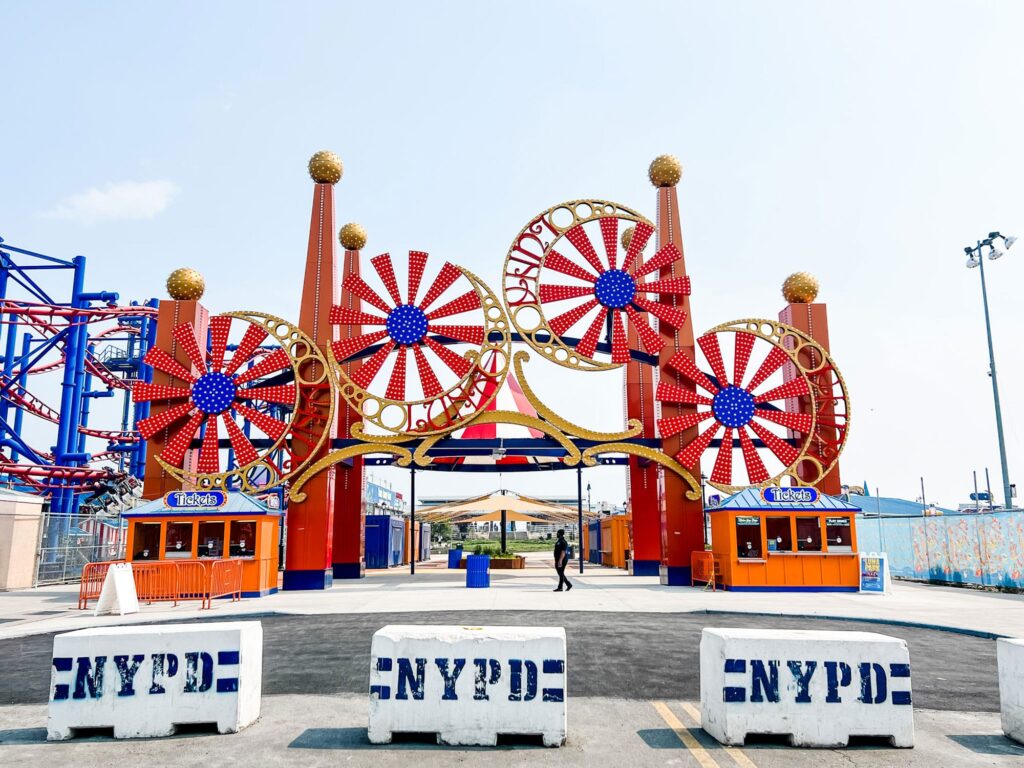
About an hour by subway from Midtown, this beloved seaside neighborhood makes for a perfect day trip. The wide sandy beach still holds onto its nostalgic, kitschy, and slightly gritty charm, complete with a wooden boardwalk and the famous Cyclone roller coaster amidst a modern amusement park. Nathan’s Famous continues to serve its iconic hot dogs, while the New York Aquarium delights kids, and catching an early evening Brooklyn Cyclones baseball game at MCU Park, the waterfront stadium, is a popular pastime.
Coney Island’s amusement park history dates back to the mid-1800s, when city dwellers sought relief from hot, cramped tenements. By the late 19th century, the area earned a wild reputation as ‘Sodom by the Sea.’ But in the early 1900s, family-friendly attractions began to take shape. Luna Park, opened in 1903, was a dazzling wonderland featuring live camels and elephants, lit by over a million bulbs. Today, visitors can still enjoy rides like the 15-story Wonder Wheel (since 1920) and the rattling Cyclone roller coaster (since 1927). After a quiet period in the 1980s, Coney Island has seen a revival, attracting locals who come to savor hot dogs, enjoy sideshows, and celebrate the annual Mermaid Parade—punk mermaids and all. It’s not Disney, but that’s part of its unique appeal.
Rides and attractions generally run daily from Memorial Day to Labor Day, when lifeguards also patrol the beach. Outside this peak season—from Easter to Memorial Day and from Labor Day to late October—they operate on weekends only, with most of the area shutting down from November through Easter.
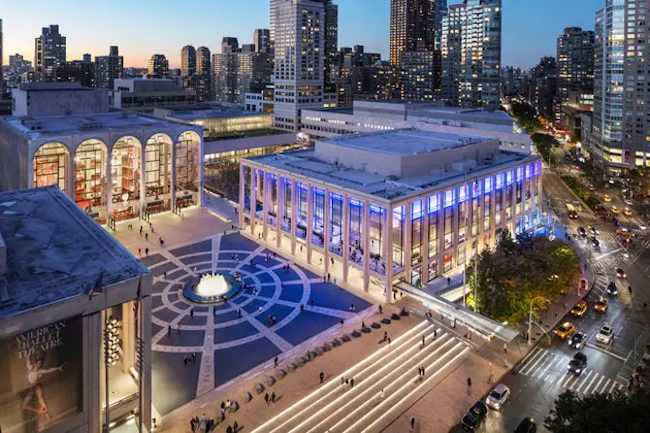
This striking collection of sleek modernist buildings is home to some of Manhattan’s most prestigious performing arts institutions: the New York Philharmonic, the New York City Ballet, and the Metropolitan Opera. The iconic Metropolitan Opera House lobby is adorned with vibrant murals by Marc Chagall. Scattered throughout the 16-acre campus are additional venues, including a theater, two film screening centers, and the renowned Juilliard School of Performing Arts.
Constructed in the 1960s, Lincoln Center replaced San Juan Hill, a predominantly African American neighborhood famously demolished under Robert Moses’ urban renewal plans—a move that remains controversial. Despite its cultural significance, the center’s original architecture faced harsh criticism for its fortress-like appearance, conservative design, and poor acoustics. For its 50th anniversary in 2009–10, the complex was revitalized by architects including Diller Scofidio + Renfro, receiving wide praise for its modern updates.
Visitors should not miss the three landmark buildings surrounding the central Revson Fountain: the Metropolitan Opera House, David Geffen Hall (formerly Avery Fisher Hall), and the David H. Koch Theater, designed by Philip Johnson. The Revson Fountain dazzles in the evenings with its choreographed water displays, especially during summer, perfectly timed with performances.
Among the renovated spaces are Alice Tully Hall, notable for its sleek translucent facade, and the David Rubenstein Atrium.
Each night, Lincoln Center offers a rich variety of performances spanning opera, ballet, theater, and music. During summer, the campus comes alive with Lincoln Center Out of Doors—a free series of dance and music events—and Midsummer Night Swing, featuring social dancing under the stars. For up-to-date information on shows, tickets, and schedules, check the official website.
Daily 75-minute guided tours explore highlights such as the Metropolitan Opera House, the Revson Fountain, and Alice Tully Hall. These tours provide a wonderful introduction to the center, and on occasion, visitors might catch a rehearsal. Tickets and details are available online or by phone.
WhatsApp us